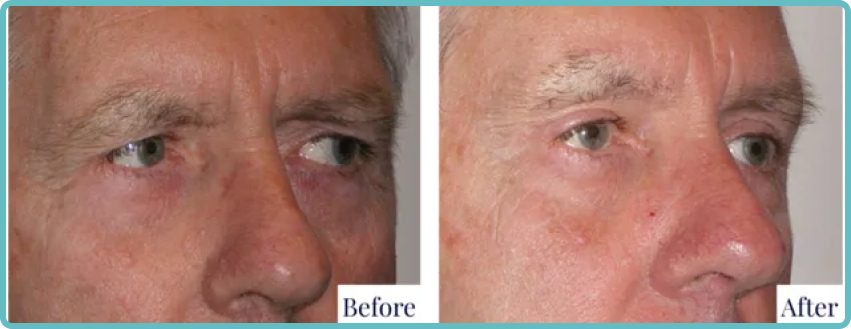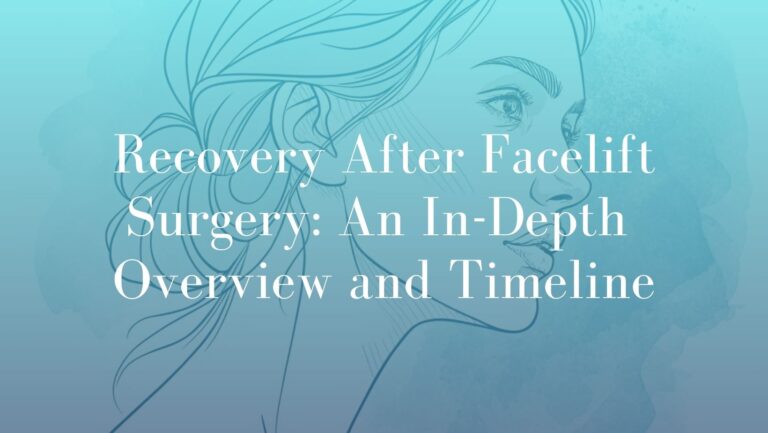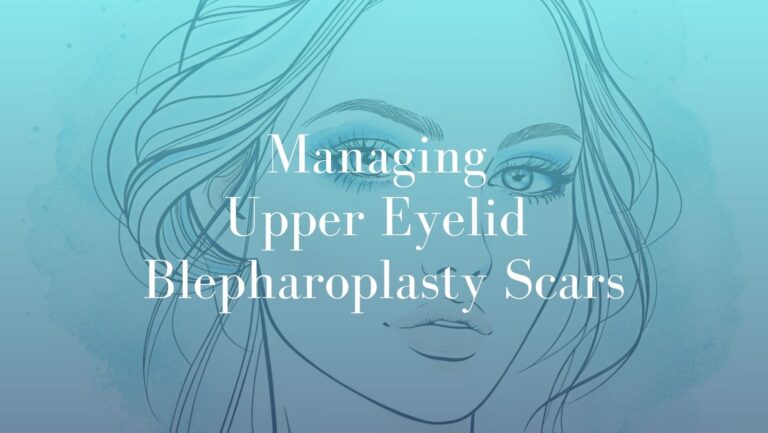
Will Medicare Cover My Blepharoplasty?
Blepharoplasty, commonly referred to as eyelid surgery, is a popular procedure in Australia for both cosmetic and medical reasons. While many people undergo blepharoplasty to change their appearance, others require it to correct functional issues that impact their vision or overall eye health. If you’re considering this procedure, one of the first questions that may come to mind is whether Medicare will cover the cost.
Blepharoplasty: Is It Right for You?
Blepharoplasty is a surgical procedure designed to remove excess skin, muscle, and sometimes fat from the upper and/or lower eyelids. The procedure can change the appearance of the eyes by making them appear more alert, and in some cases, it can restore proper vision that has been obstructed by lax or excess skin.
There are two main types of blepharoplasty:
- Upper eyelid blepharoplasty: This focuses on removing excess skin and fat from the upper eyelids.
- Lower eyelid blepharoplasty: This targets the removal of bags or puffiness under the eyes.
People seek blepharoplasty for various reasons, and these can generally be classified under two categories: cosmetic and medical.

Cosmetic Reasons:
- To reduce the appearance of droopy or puffy eyelids
- To achieve a more awake look
- To correct asymmetry between the eyelids
- To remove “baggy” lower lids or excess skin
Medical Reasons:
- Lax upper eyelid skin obstructing vision
- Chronic irritation from excess skin rubbing against the eye
- Difficulty wearing glasses or contact lenses due to excess skin around the eyes
- Fatigue from constantly trying to raise the eyebrows to improve vision
Now, while cosmetic blepharoplasty is not covered by Medicare, medical blepharoplasty may be partially or fully covered if it meets certain criteria.
Can Your Blepharoplasty Be Covered by Medicare?
Medicare is Australia’s public healthcare system, providing subsidies for a wide range of medical procedures. However, it’s important to understand that Medicare distinguishes between cosmetic and medically necessary procedures. Cosmetic procedures are generally not covered by Medicare, whereas medically necessary procedures may be eligible for coverage.
The main difference between a cosmetic procedure and a medically necessary procedure lies in the reason for undergoing the surgery. If you are seeking blepharoplasty purely for aesthetic reasons this would be considered a cosmetic procedure. Cosmetic procedures are not covered by Medicare.
On the other hand, blepharoplasty may be seen as a medically necessary procedure if it is required to improve your health or quality of life, such as when the heaviness of your eyelids interferes with your vision.
Medical Necessity – When Abdominoplasty Becomes More Than Cosmetic
There are several health-related issues that may make blepharoplasty a medical necessity. Some of these include:
- Visual Field Obstruction: Excess skin on the upper eyelids can hang down and block your peripheral vision, making it difficult to see clearly.
- Chronic Eyelid Irritation: If your excess skin rubs against the surface of your eye, it can cause irritation, discomfort, and even infections.
- Difficulty Performing Daily Tasks: When eyelid laxity becomes severe, they may impede your ability to perform everyday tasks such as reading, driving, or working.
- Strain and Discomfort: Constantly raising your eyebrows to lift heavy lax eyelids can lead to forehead strain and headaches.
To qualify for Medicare coverage, your blepharoplasty must meet specific medical criteria. These criteria are outlined under the Medicare Benefits Schedule (MBS), which is the list of services covered by Medicare.
The main criterion is that the procedure must address a functional impairment. In most cases, this means that your eyelids must be obstructing your vision or causing significant discomfort. To prove this, you will need documentation from a specialist—such as an ophthalmologist or plastic surgeon—stating that blepharoplasty is necessary for medical reasons.
MBS Item Numbers for Blepharoplasty
Medicare has specific MBS item numbers that correspond with medically necessary blepharoplasty procedures. As of the latest guidelines, the following item numbers are relevant:
This item covers upper eyelid reduction for medical conditions such as visual impairment, inflammation, herniation of orbital fat, or post-traumatic scarring. Symmetry restoration for the contralateral eyelid may also qualify. Photographic or diagnostic imaging evidence must be documented to demonstrate clinical need.
Key points:
- For conditions like visual obstruction or inflammation.
- Clinical evidence required.
- Fee: $267.80 (75% benefit = $200.85; 85% benefit = $227.65).
- Multiple Operation Rule applies.
- Requires anaesthesia.
This item covers lower eyelid reduction for medical conditions such as herniation of orbital fat in exophthalmos, facial nerve palsy, or post-traumatic scarring. It may also include restoring symmetry in the contralateral eyelid. Clinical need must be documented through photographic or diagnostic evidence.
Key points:
- For conditions like herniation of orbital fat or facial nerve palsy.
- Clinical evidence required.
- Fee: $371.45 (75% benefit = $278.60; 85% benefit = $315.75).
- Multiple Operation Rule applies.
- Requires anaesthesia.
These item numbers dictate whether your surgery qualifies for a Medicare rebate. Dr Mark Kohout will help determine if your condition fits the requirements associated with these MBS codes.
Medicare Application Process
If you believe your blepharoplasty qualifies for Medicare coverage, follow these steps:
- Consult a Specialist: The process begins with a consultation from a plastic surgeon, like Dr Mark Kohout. They will assess your condition and determine if you meet the medical criteria for Medicare coverage. Keep in mind that you need a GP referral to see Dr Kohout.
- Undergo Visual Field Testing: If your concern is vision-related, you may need to undergo a visual field test to document how much your drooping eyelids are obstructing your peripheral vision.
- Collect Medical Documentation: Your surgeon will need to provide documentation, including test results and a detailed report explaining why the procedure is medically necessary.
Tips for Gathering Necessary Medical Evidence
- Get a Second Opinion: In some cases, a second opinion from another specialist can strengthen your case for Medicare coverage.
- Document Symptoms Thoroughly: Keep a record of the difficulties you’ve experienced due to your eyelid condition, such as headaches, visual problems, or difficulty performing daily tasks.
Out-of-Pocket Costs
Even if Medicare covers part of your blepharoplasty, there will likely be out-of-pocket costs. These costs include gap payments, which are the difference between the Medicare rebate and the surgeon’s total fee.
To manage unexpected expenses, it is recommended to get a detailed cost breakdown before proceeding with the surgery. Dr Mark Kohout, for example, provides a comprehensive estimate of all fees involved during the consultation phase.
Additional Expenses Not Covered by Medicare
Aside from gap payments, there may be other costs not covered by Medicare, such as:
- Some Anaesthesia fees
- Hospital or surgical facility fees
- Post-operative care and medications
- Follow-up appointments
These additional costs can vary depending on the complexity of the surgery and the facility where it is performed.
Private Health Insurance – A Complementary Option
If you have private health insurance, it may cover a portion of your blepharoplasty costs, particularly if the procedure is deemed medically necessary. Private health insurance can help cover hospital fees, anaesthesia, and other expenses that Medicare might not completely cover.
Having private health insurance can offer several advantages, including:
- Shorter Wait Times: Private patients typically have access to shorter wait times for elective surgeries.
- Choice of Surgeon and Facility: You may have more flexibility in choosing your surgeon and the hospital where the procedure will take place.
- Additional Coverage: Some policies cover post-operative care, rehabilitation, and additional follow-up appointments.
However, it’s essential to thoroughly check with your insurance provider about the specifics of your coverage, as not all policies will cover blepharoplasty, even for medical reasons.
Other Payment Options
If your blepharoplasty is not covered by Medicare or private insurance, there are still financing options available. You can choose a payment plan or a medical loan that allows you to pay for the procedure in instalments.
Before committing to a finance plan, ensure you understand the terms, including interest rates and repayment periods.
Your Next Steps
To determine if you might qualify for Medicare coverage for blepharoplasty, consider the following:
- Do you experience vision problems due to drooping eyelids?
- Is there significant discomfort or irritation caused by your eyelid condition?
- Have you undergone tests that confirm your eyelid condition is impacting your vision?
If you answered yes to any of these questions, it’s worth consulting with a specialist to explore your options.
The best way to assess your candidacy for blepharoplasty and potential Medicare coverage is to book a consultation with a specialist plastic surgeon like Dr Mark Kohout. During this consultation, your eyelid condition will be evaluated, and you’ll receive personalised advice on whether the procedure is medically necessary.
If you’re ready to take the next step, contact Dr Mark Kohout’s office to schedule a consultation and explore your options for blepharoplasty in Sydney.
FAQs about Medicare for Blepharoplasty
How long does it take to recover from blepharoplasty?
Recovery from blepharoplasty typically takes around 10 to 14 days, though this can vary depending on the individual. Many people can return to normal activities within two weeks, but full recovery, including the fading of scars and swelling, may take a few months. During the initial recovery period, you’ll be advised to avoid strenuous activity and protect your eyes from irritation.
Will Medicare cover a second blepharoplasty procedure if I’ve already had one?
Medicare may cover a second blepharoplasty if it is medically necessary, such as if the original surgery didn’t resolve functional issues or if new problems arise that affect vision or eye health. However, you will need updated medical evidence to support the claim.
Can blepharoplasty be combined with other cosmetic procedures, and will Medicare cover them?
Yes, blepharoplasty can be combined with other cosmetic procedures, such as a facelift or brow lift. However, Medicare will only cover the blepharoplasty portion if it is medically necessary. Any additional procedures that are purely cosmetic will not be covered by Medicare, and you will need to pay for those out of pocket.
Are there any risks associated with blepharoplasty that I should be aware of?
As with any surgery, blepharoplasty carries some possible risks and complications. These can include infection, scarring, dry eyes, difficulty closing your eyes, and in rare cases, vision problems. It’s important to discuss all potential risks and complications with Dr Kohout during your consultation.
Further Reading about Blepharoplasty with Specialist Plastic Surgeon Dr Mark Kohout
- Read Dr Mark Kohout’s Procedure Page on Eyelid Surgery
- Read Dr Mark Kohout’s Procedure Page on Recovery After Blepharoplasty (Eyelid Surgery)
Medical References for Medicare and Blepharoplasty
- What Medicare covers
- Effects of Upper Blepharoplasty Techniques on Headaches, Eyebrow Position, and Electromyographic Outcomes
- Aesthetic outcomes of upper eyelid blepharoplasty: a systematic review
- Correlation of the vision-related functional impairment associated with blepharoptosis and the impact of blepharoptosis surgery
- Health care and Medicare
Related Blog Posts
Recovery After Facelift Surgery: An In-Depth…
Undergoing facelift surgery is a significant decision that requires careful consideration. However, the journey doesn’t end when you leave the operating theatre. While the procedure aims to create a refreshed…
Managing Upper Eyelid Scars after Blepharoplasty
Transform Your Recovery: A Complete Guide to Managing Upper Eyelid Blepharoplasty Scars Blepharoplasty, commonly referred to as eyelid surgery, is a sought-after procedure that addresses excess skin and tissue around the…
Cost of Blepharoplasty in Sydney
A Detailed Overview of the Cost of Blepharoplasty in Sydney Blepharoplasty, also known as eyelid surgery, is a popular procedure for addressing concerns related to the upper or lower eyelids. It can…






